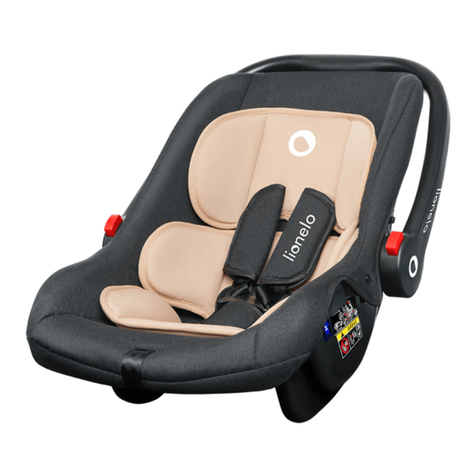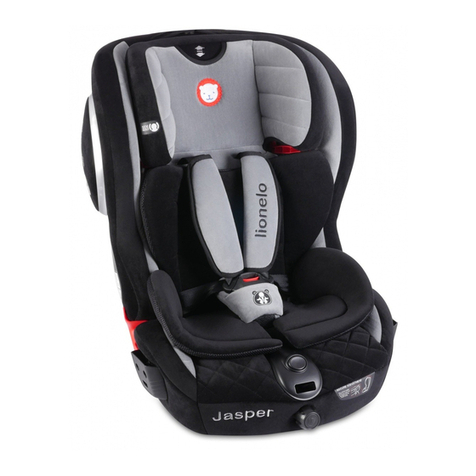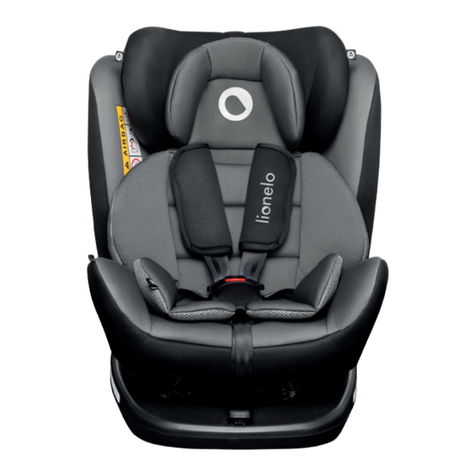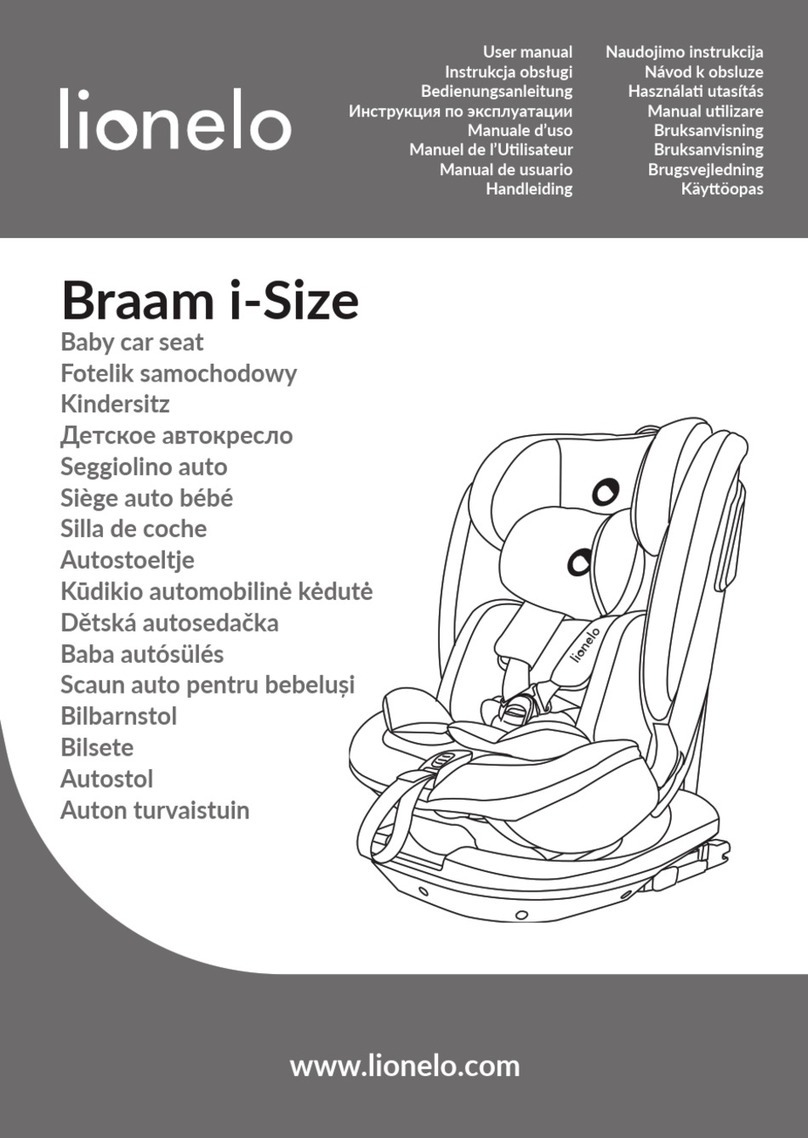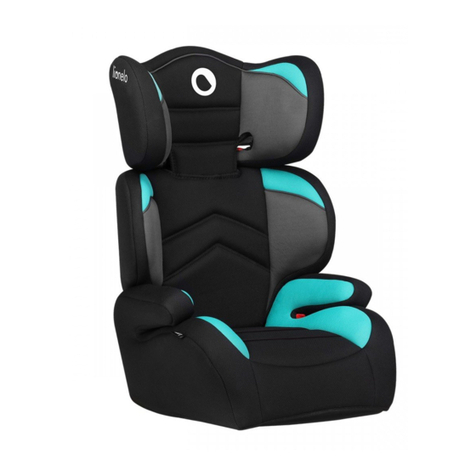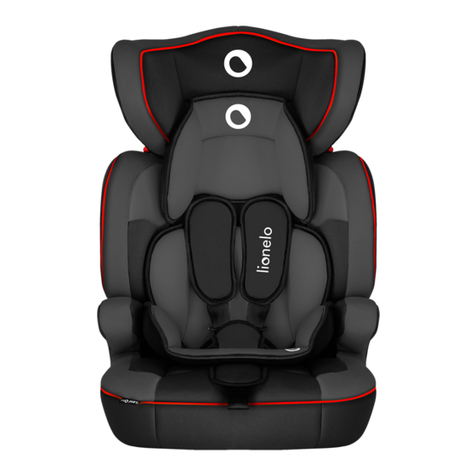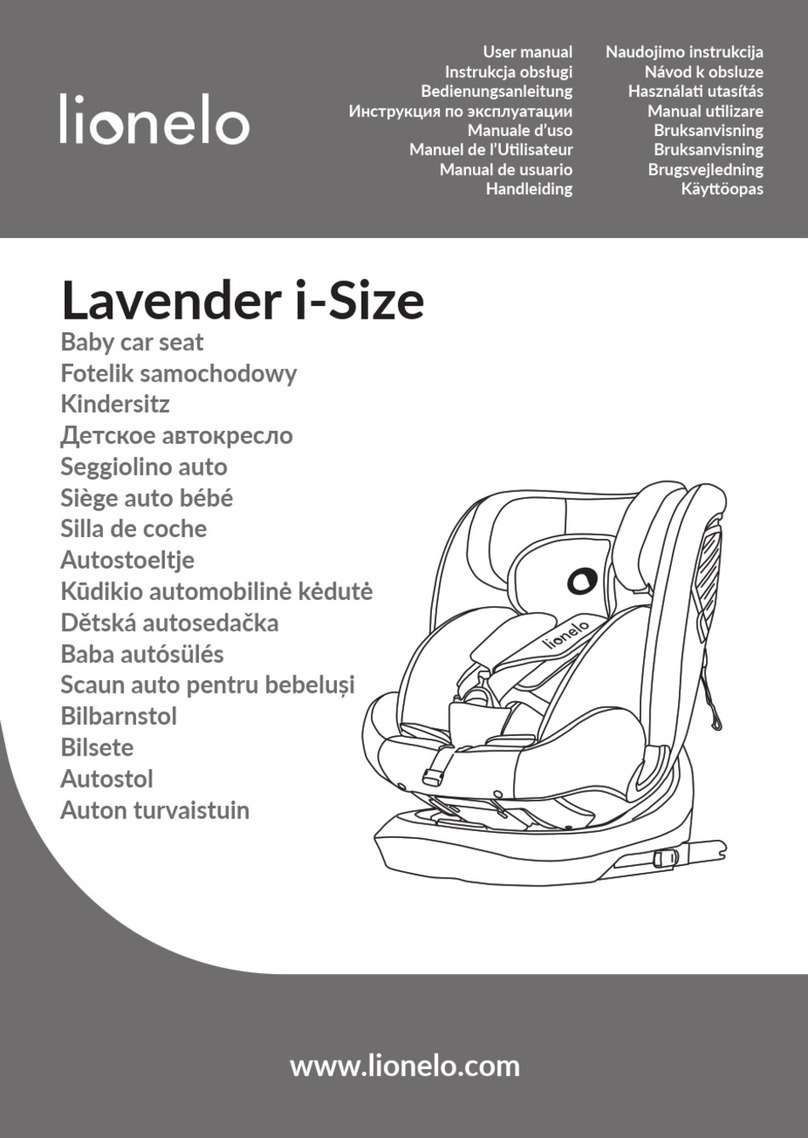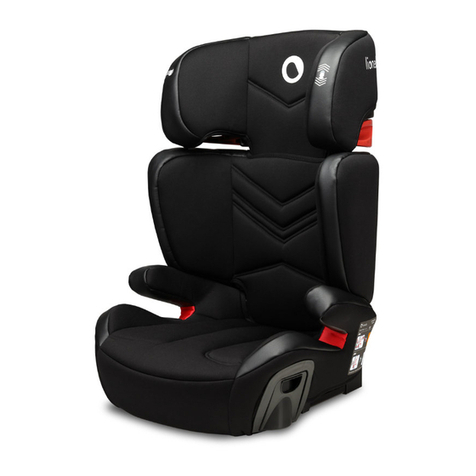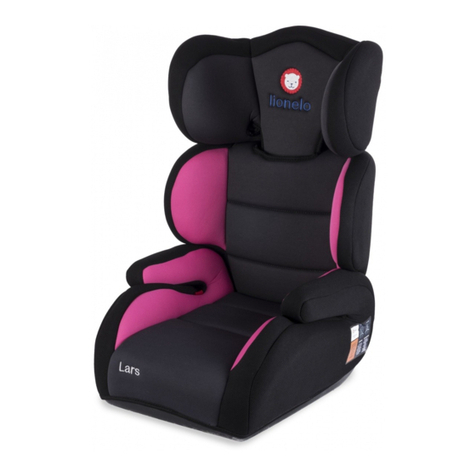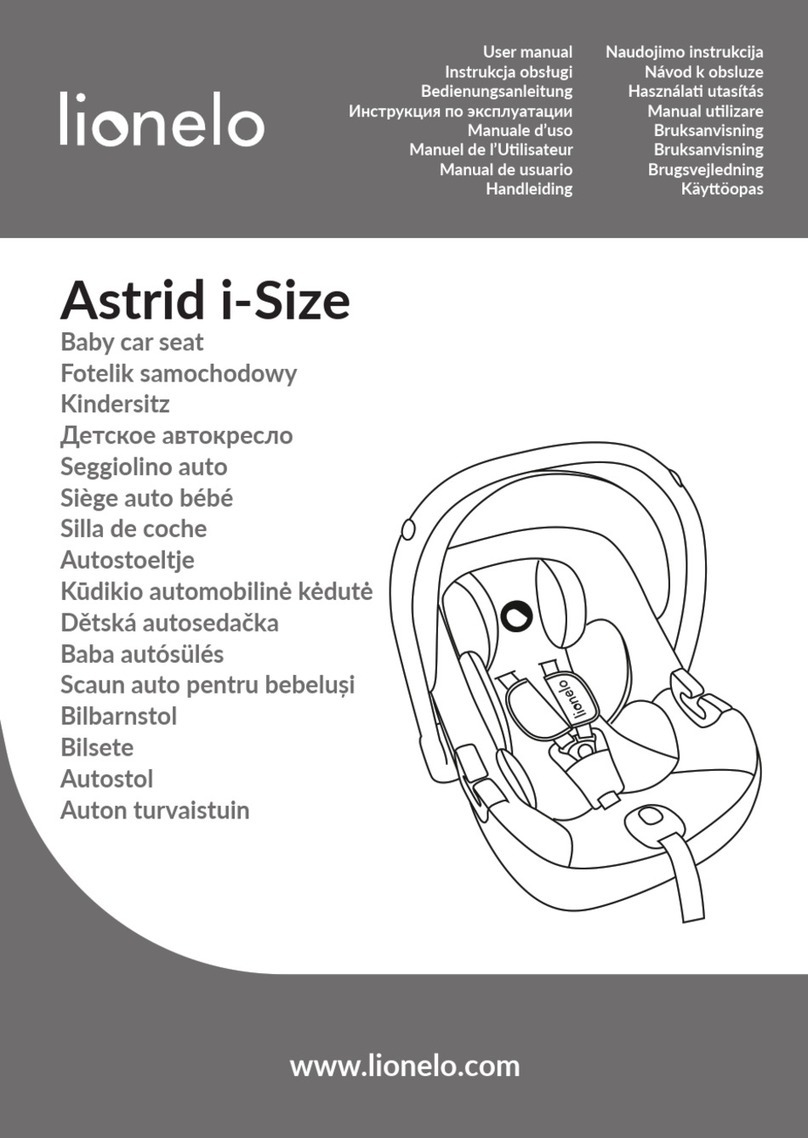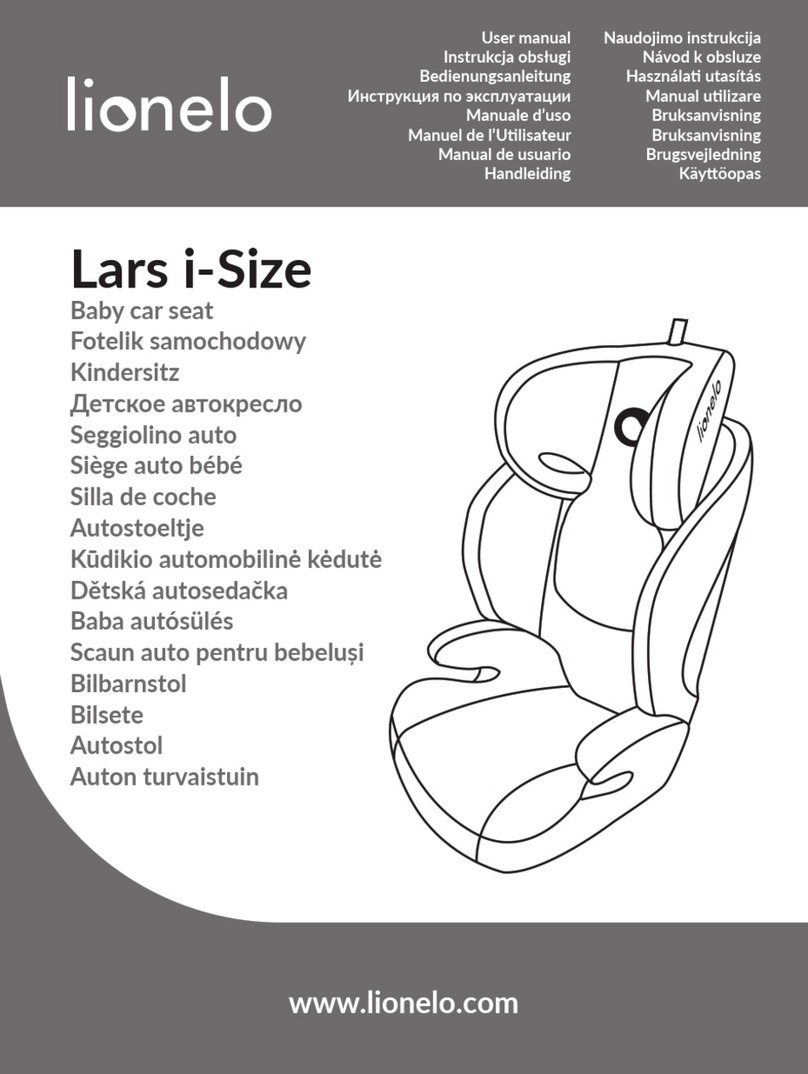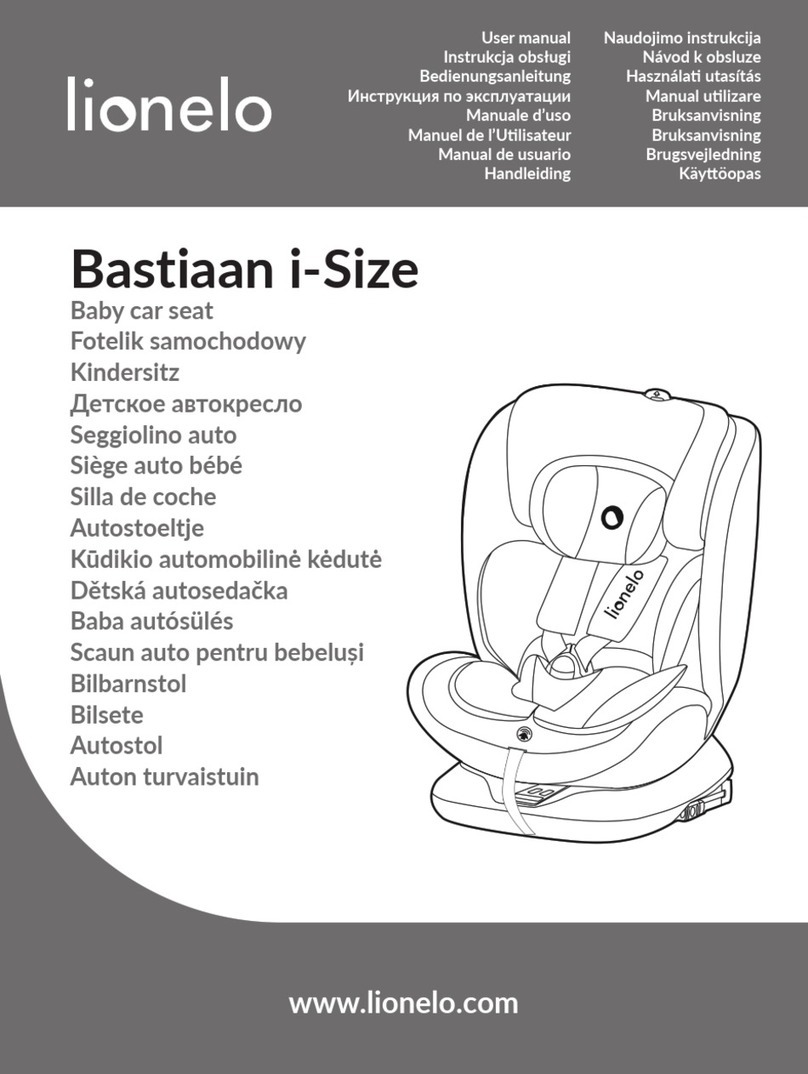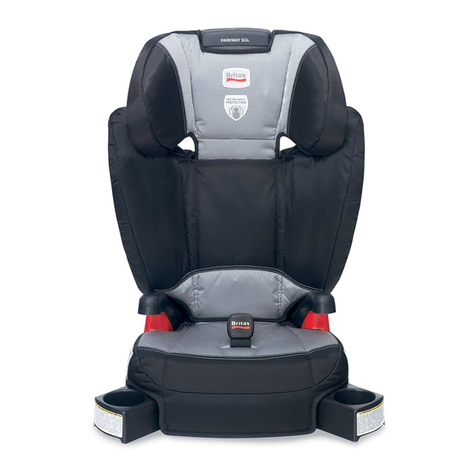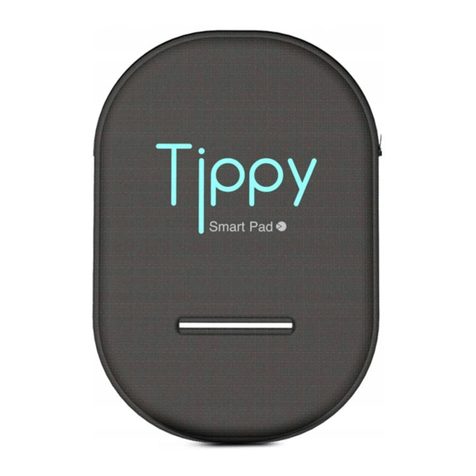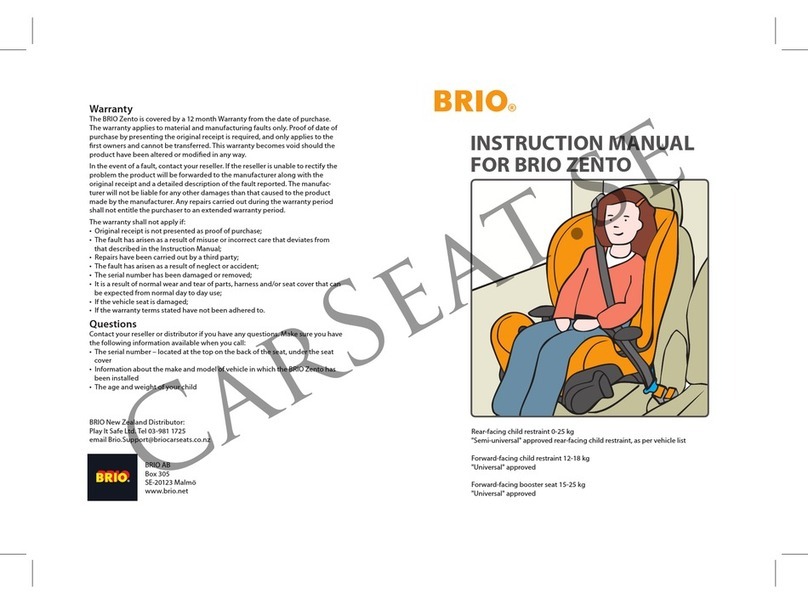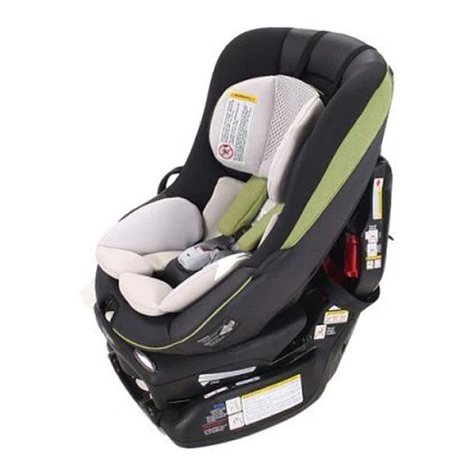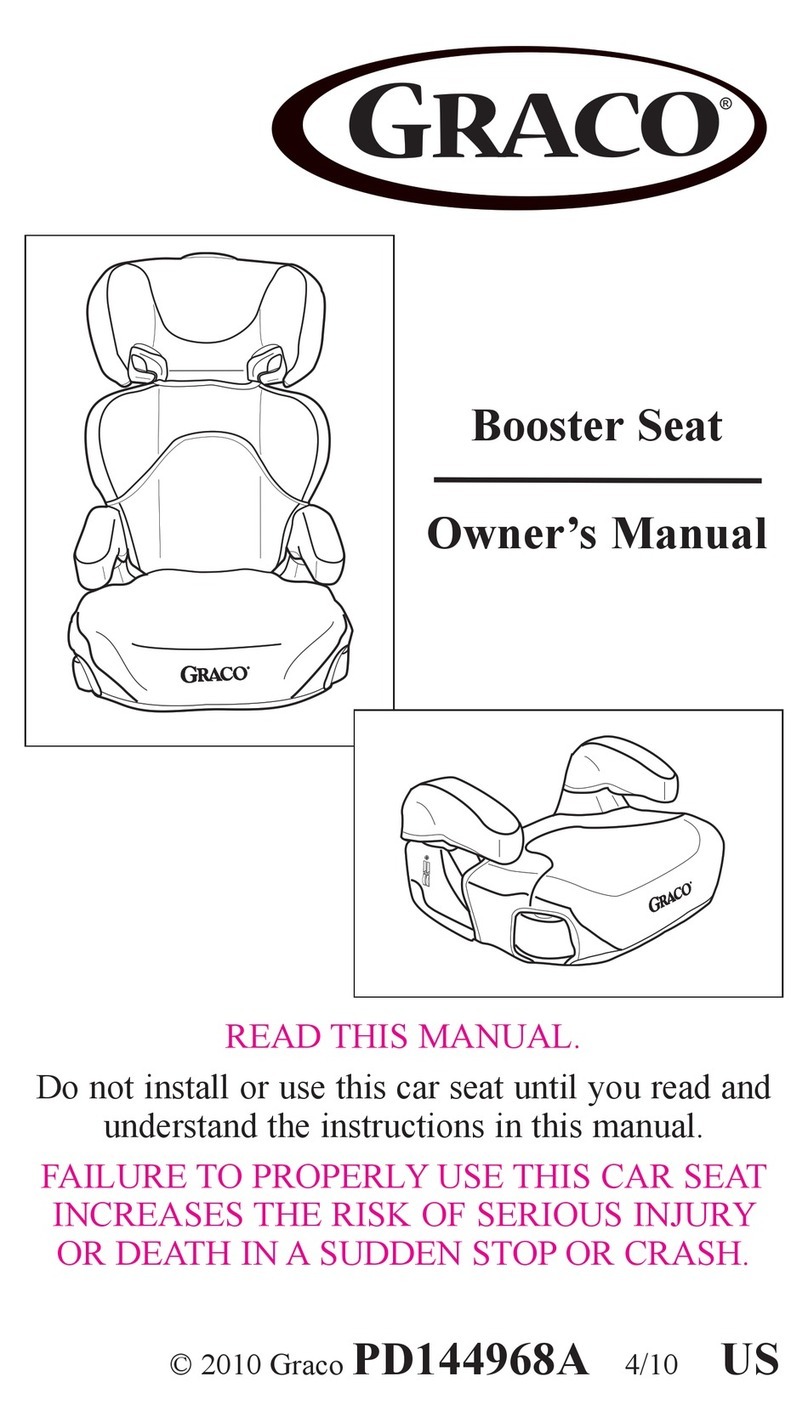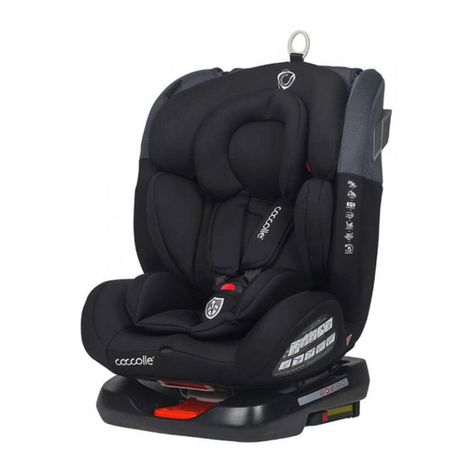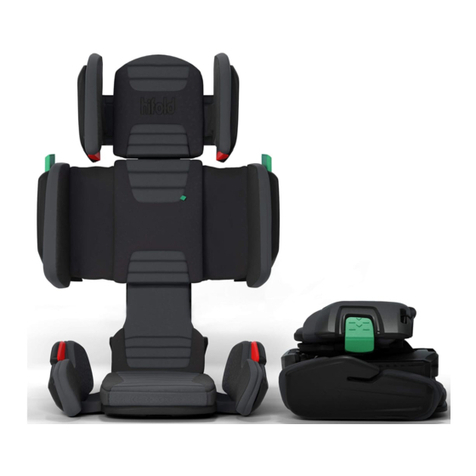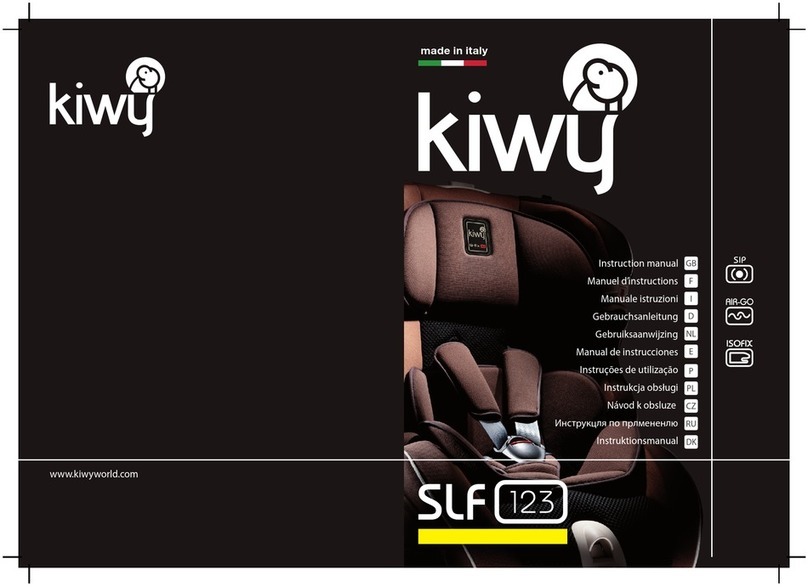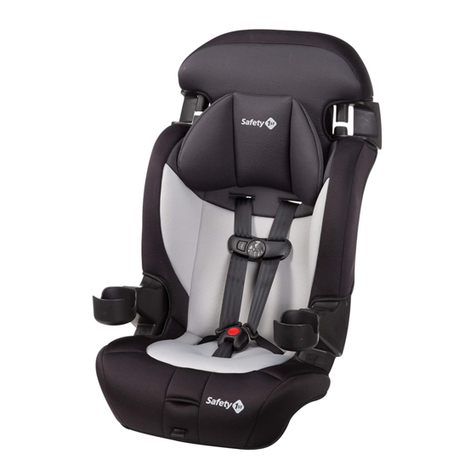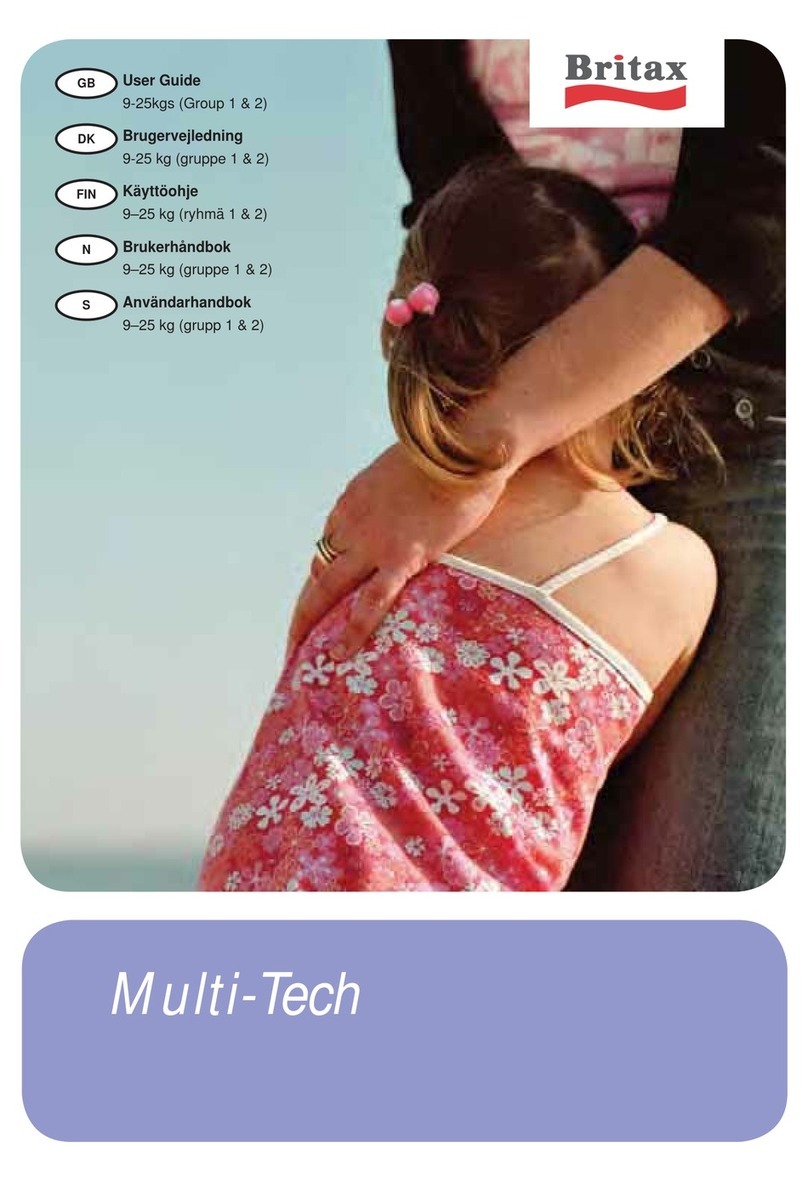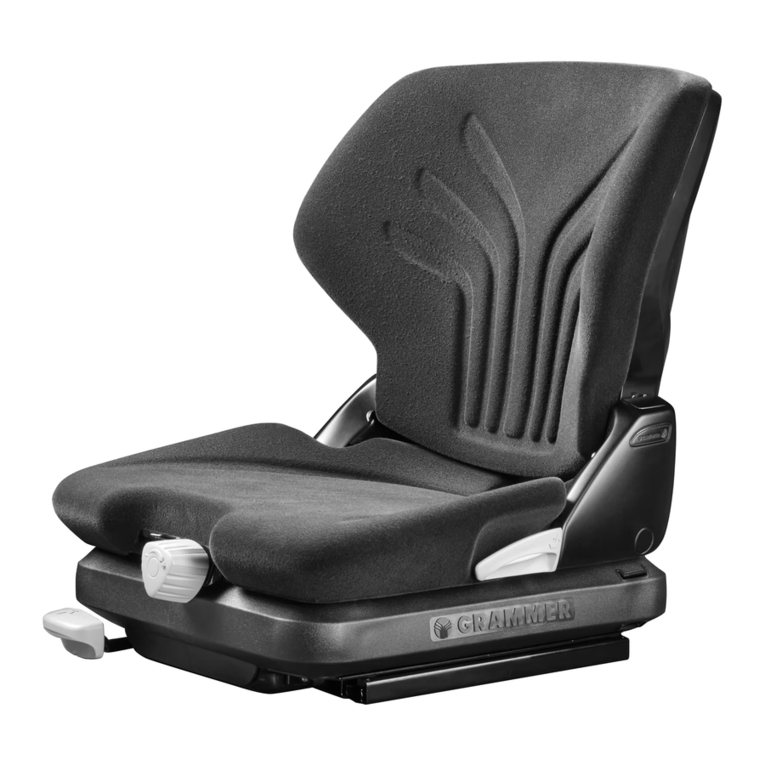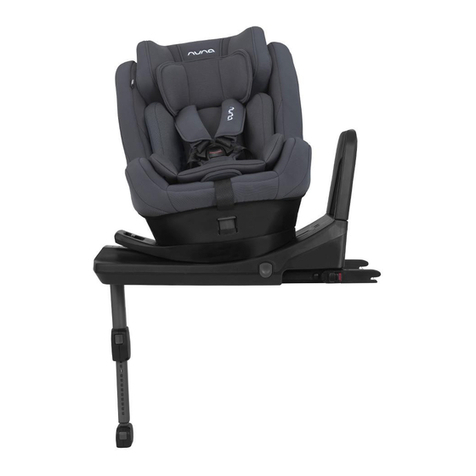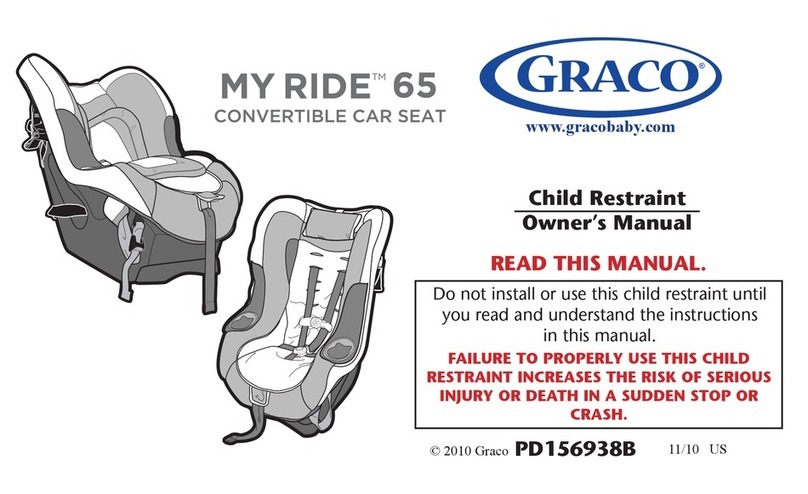
‑ 10 ‑EN
EN
Dear customer!
Should you have any remarks or quesons concerning the product, please do not
Producer:
BrandLine Group Sp. z o. o.
A. Kręglewskiego 1, 61-248 Poznań, Poland
The product meets the requirements of the standard: R129/03.
APPLIES TO REAR-FACING INSTALLATION:
NOTICE. This is an i-Size Enhanced Child Restraint System. It is approved according
to UN Regulaon No. 129, for use in i-Size compable vehicle seang posions as
indicated by vehicle manufacturers in the vehicle users’s manual. If in doubt, consult
either the Enhanced Child Restraint System manufacturer or the retailer.
APPLIES TO FORWARD FACING INSTALLATION:
NOTICE. This is a i-Size booster seat Enhanced Child Restraint System. It is approved
according to UN Regulaon No. 129, for use primarily in “i-Size seang posions” as
indicated by vehicle manufacturers in the vehicle user’s manual. If in doubt, consult
either the Enhanced Child Restraint System manufacturer or the retailer.
The product is only suitable for mounng on the posions shown in Fig. B, which
are equipped with ISOFIX connectors and Top Tether hooks (applies to mounng for
group 40-105 cm).
WARNINGS:
1. The product is designed for children weighing up to 36 kg and between 40 and
150 cm in height.
2. If your child is less than 15 months old, do not use a forward-facing seat.
3. Do not use a forward-facing seat if your child is less than 100 cm tall.
4. The hard parts and plasc parts of the child restraint system should be posioned
and installed in such a manner that they cannot be trapped by a sliding seat or
vehicle door under normal vehicle operang condions.
5. For rear-facing installaon, do not use the seat where the front airbag is acve.
6. Any seat belts holding the child must be well suited to the child’s size. The belts
